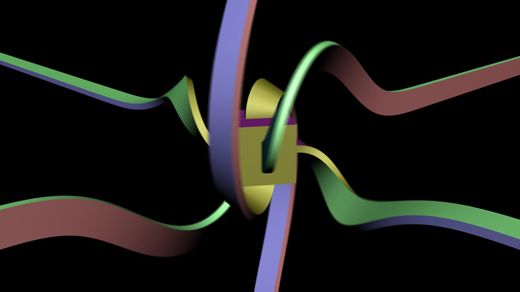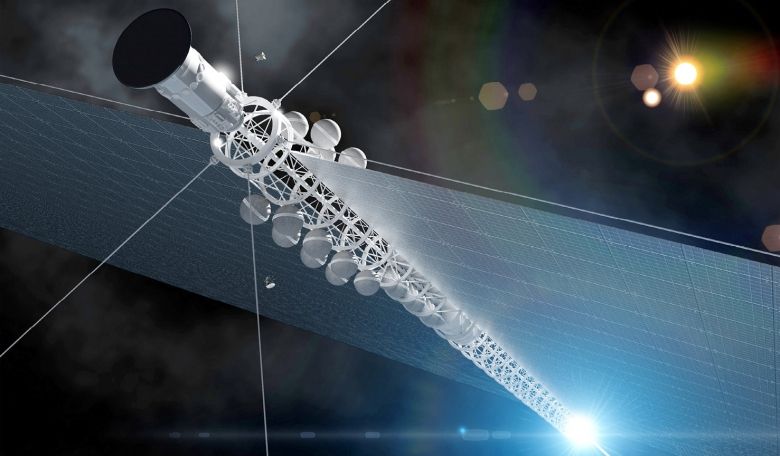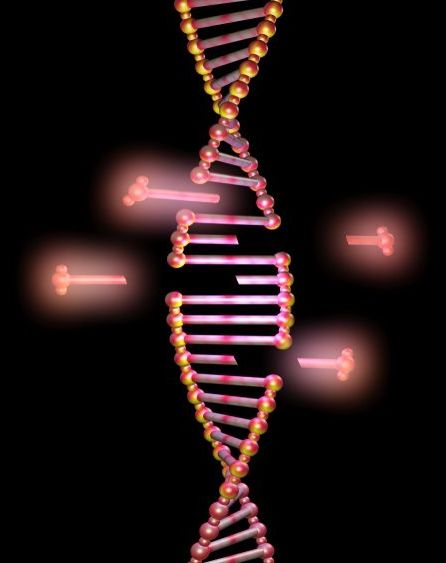Living in space is helping us save the environment back on earth — here’s just one of the ways. #SpaceFacts
Get the latest international news and world events from around the world.

ANA and JAXA Partner to Create a New Space Industry Centered Around Real-World Avatars
TOKYO, Sept. 6, 2018 (ANA HD/JAXA PR) — ANA HOLDINGS INC. (hereinafter ANA HD) and Japan Aerospace Exploration Agency ( JAXA ) are proud to announce the launch of “AVATAR X,” a multi-phased program to revolutionize space exploration and development using real-world Avatars (*1).
AVATAR X aims to capitalize on the growing space-based economy by accelerating development of real-world Avatars that will enable humans to remotely build camps on the Moon, support long-term space missions and further explore space from afar.
AVATAR X is part of “ANA’s AVATAR Vision (*2),” a breakthrough endeavor to advance and pioneer real-world Avatar technologies, and JAXA ‘s new research and development program “J-SPARC” ( JAXA Space Innovation through Partnership and Co-creation). Together with a growing list of public and private partners, AVATAR X hopes to catalyze new space-based businesses that will provide key services and an unprecedented level of access to space.
Baidu has created a ‘no code’ platform to make building AI models easier
Hoping to make up ground in the hotly contested artificial intelligence battleground, Chinese Internet giant Baidu Inc. is releasing a tool that allows businesses to create and deploy AI models without coding skills.
Announced Saturday, EZDL is a “no-code platform to build custom machine learning models,” designed with ease of use and security in mind, the company said.
“EZDL is a service platform that allows users to build custom machine learning models with a drag-and-drop interface,” Yongkang Xie, tech lead of Baidu EZDL, said in a statement. “It takes only four steps to train a deep learning model, built specifically for your unique business needs.”

A Review of Cellular Senescence and Senolytics
Today, we want to point out a new publication that dives into the world of senolytics, which are drugs or therapies that seek and destroy harmful non-dividing cells that resist the programmed cell death known as apoptosis.
These cells linger in the body, and, as we age, more and more of them accumulate and contribute to the chronic age-related inflammation known as “inflammaging” while reducing tissue regeneration and repair and contributing to the development of various age-related diseases.
One approach to dealing with these problem cells is to tip them over the edge and cause them to self-destruct, thus removing them and the inflammation they cause. A new class of drugs known as senolytics was discovered a few years ago, and the interest in developing them to potentially combat age-related diseases has been growing rapidly.


High-Speed Internet Access for Everyone & Why Global Connectivity Is Needed!
In this video, we’ll be discussing why global internet connectivity is essential in ensuring a more prosperous future for all and to assure in many of the new technologies in development today. As well as the ongoing and future initiatives to make this hyper-connected future a reality – sooner than many think.
[0:30–10:00] Starting off we’ll take a look at the evolution of the web, how it has advanced society, assured in new technological advancements and why global connectivity is essential in ensuring everyone can access these benefits.
[10:00–19:10] Following that, we’ll discuss the ground-based initiatives to bring internet connectivity to the world, with Googles Project Loon and Facebooks Project Aquila, as well as the upgrades they will see in the future.

Flying to the stars
Almost anyone who has looked into the night sky has wondered if we could ever travel to the stars. Today, for the first time in history, we might be only decades away from sending a spacecraft to a star, reaching it within the 21st century. Here, Andreas Hein looks into the possibilities and challenges associated with getting to the stars and asks if humans will ever set foot on an exoplanet.
Flying to another star is incredibly difficult, first and foremost due to the distances involved. Imagine for a moment that the distance between our Sun and the Earth is one metre. The Sun would be the size of a grain of salt on this scale. Still, the closest star to our Sun, Proxima Centauri, would be more than 265 km away. At this scale, the farthest human-made object, the Voyager 1 probe, would be at a distance of about 141 metres from the Sun, increasing its distance by about 3.6 metres per year. In reality Voyager 1 flies at an astonishing velocity of 17 km/s; at this velocity, a flight to Proxima Centauri would take about 75,000 years. This timescale sounds hopeless but it does also mean that, in principle, we can already send spacecraft to other stars. Voyager 1 is heading towards the star Gliese 445 and Voyager 2 towards Sirius.
When we talk about interstellar travel however, we commonly mean that we can reach another star within an acceptable timeframe. What is an ‘acceptable timeframe’ though? The team that designed the Daedalus spacecraft, a hypothetical fusion-propelled interstellar probe, argued that an acceptable trip duration would be about the working life of a scientist, roughly 50 years. Breakthrough Starshot, an ongoing project for laser-propelled interstellar probes, is aiming at 20 years to Proxima Centauri.

Laser-powered-drones may beat endurance hurdles
Hmm. Drones that can be recharged by a laser. So how long could they fly before having to land? How about “never mind”? We can look forward to seeing this idea in action. New Scientist had a story on September 3 that the US Army was making a laser-powered drone to beast endurance hurdles.
The system in mind involves a laser shot from the ground that can power up a military drone mid-flight.
The Daily Mail said that this laser system would be beaming power to photovoltaic cells on the drone, and Futurism said that “The key is hitting a photovoltaic cell on the drone, which then converts the light from the laser into electricity. The Army hopes to be able to do this from up to 500 meters (.31 miles) away.”

Administering Gene Therapy Without Triggering Immune Response
A new potential method to administer gene therapy without triggering an immune response.
Scientists at Stanford University School of Medicine managed to administer effective gene therapy in mice without triggering an autoimmune reaction. The research, led by Dr. Peggy Ho, Ph.D., was published in the Proceedings of the National Academy of Sciences [1].
Study abstract
In gene therapy for Duchenne muscular dystrophy there are two potential immunological obstacles. An individual with Duchenne muscular dystrophy has a genetic mutation in dystrophin, and therefore the wild-type protein is “foreign,” and thus potentially immunogenic. The adeno-associated virus serotype-6 (AAV6) vector for delivery of dystrophin is a viral-derived vector with its own inherent immunogenicity. We have developed a technology where an engineered plasmid DNA is delivered to reduce autoimmunity. We have taken this approach into humans, tolerizing to myelin proteins in multiple sclerosis and to proinsulin in type 1 diabetes. Here, we extend this technology to a model of gene therapy to reduce the immunogenicity of the AAV vector and of the wild-type protein product that is missing in the genetic disease.